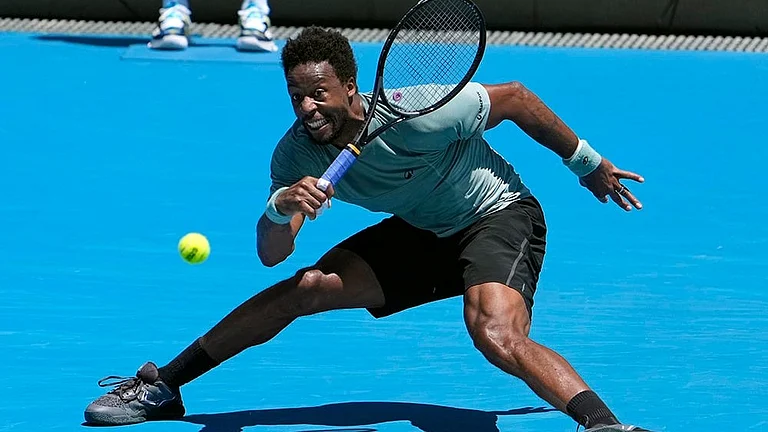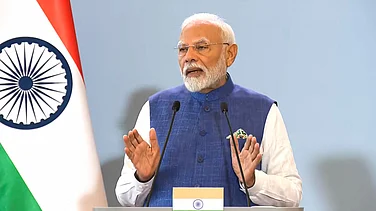Goa has long been celebrated for its sun-kissed beaches, rich cultural heritage, and vibrant spirit. However, to explore Goa, beyond beaches state’s Minister of Tourism, Shri Rohan Khaunte, is leading a transformative journey to redefine the state's identity in the global tourism landscape.
In an exclusive interview with Outlook Traveller's Shreya Cheema, Minister Khaunte unveils the strategic initiatives that are steering Goa towards a new era of tourism—one that transcends the conventional and embraces the diverse interests of today's discerning travellers. From virtual connectivity in spirituality to a nuanced focus on rural experiences, Khaunte shares a compelling vision for Goa that promises not just a holiday but a profound and immersive journey for every visitor.
Goa has always been a popular destination among discerning tourists, but over tourism can also lead to a negative impact. What are some initiatives developed by the department to combat that and promote ecotourism?
Goa has always been a top destination for international and domestic travellers, but have lacked a comprehensive long-term vision. But now, we have initiated a regional plan, and this strategic approach is pivotal for states like ours to recalibrate post-COVID.
The pandemic brought a shift in the type of tourists we attract. Presently, the emphasis is on immersive experiences and tranquility, a departure from Goa's reputation as a nightlife hub. Our initial decision is to move beyond this stereotype, focusing more on quality rather than quantity.
In terms of infrastructure, challenges persist with the new MOPA airport and the existing hotel inventory. However, despite constraints, Goa maintains an impressive 80% occupancy throughout the year.
The key challenge is to attract tourists consistently, necessitating a diversification of offerings. While we did fare well during the COVID by promoting the destination as ideal for work-from-home, it is important we reimagine our offerings. Addressing the infrastructural challenges, introducing new tourism services, and celebrating cultural festivities are integral components of our strategy. We are also delving into hinterland tourism, particularly rural tourism, with policies promoting homestays and caravans. We are creating sustainable models that avoid over exploitation.
We are also exploring emerging markets and going beyond the traditionally dominant UK and Russian markets. Our rebranding efforts, international event participation and engagements with various governments and trade entities signal our intent to reach new horizons in the next two years, ushering in a new era of tourism.
A key focus for UNWTO and the Ministry of Tourism has been the development of rural tourism. What are the steps taken by the department towards promoting the same in Goa?
The recent G20 Declaration was a milestone, shedding light on green investments and sustainable goals. Our commitment extends to responsible and sustainable tourism, evidenced by our focus on clean and safe beaches and our proactive approach to streamline activities such as taxi services, watersports, and shacks. Recently, we have been working towards augmenting hinterland tourism, particularly rural tourism, with policies promoting homestays and caravans. Our key focus is on sustainable and responsible tourism.
Goa has always been a popular destination for international travellers. What are some initiatives the department has taken to augment that?
In 2019, we had approximately 8 million tourists, with the majority being domestic tourists and 1.2 million international visitors. What stands out is the evolving interest of international tourists in our history, heritage, spirituality, and wellness. To align with this growing interest, we have focused on enhancing connectivity and taken initiatives that reflect Goa's culture, such as ensuring every shack sells local Goa’n delicacies.
Connectivity has historically been a significant challenge, but we've made strides. For instance, connecting to places like Rishikesh and Haridwar, which used to take a minimum of seven hours, can now be achieved in just two and a half hours. Similar improvements on for destinations like Guwahati and Varanasi. This reduction in flight timings has facilitated a more fluid flow of domestic and international tourists. Prime Minister Narendra Modi ji call of DEKHO APNA DESH, we focused on improving connectivity to provide better experience for visitors.
Moreover, we aim to boost B2B interactions and encourage the sharing of traditions and experiences between states. While Haridwar and Rishikesh attract international tourists, the goal is to also draw them to destinations like Goa. Likewise, we want to encourage domestic tourists to explore international destinations.
Historically, the dominant sources of international tourists have been Russia and the UK. However, we are broadening our focus to include countries like Portugal, Japan, Russia, South Korea, and the UAE, which have shown promising numbers. The post-COVID scenario has seen a shift in travel preferences, with short-haul tourists now willing to undertake longer journeys.
We have also initiated discussions with the central government and our Chief Minister to explore an open skies policy and address issues related to seat sharing. A collaborative approach with international airlines could also significantly enhance our global connectivity.
How are the new tourism initiatives, including spiritual tourism, poised to impact the local community who rely on tourism positively?
Any initiative undertaken resonates profoundly due to this sizeable audience, as it involves a population of 1.5 million people. The statement "Goa beyond beaches" doesn't imply neglecting the beaches, as they continue to thrive independently. The focus is on a specific demographic—those discerning spenders seeking peace, calmness, tranquility, and immersive experiences. These individuals are distancing themselves from conventional tourist activities and are driven by a desire to spend quality time with family, explore good restaurants, and experience the local way of life.
This target audience, constituting substantially to our land parcels in rural areas, holds immense potential. However, sustainable practices are paramount to prevent over-exploitation and ensure a delicate balance with our cultural ethos. The policies being formulated, including the homestay and caravan policies, aim to achieve this balance. The upcoming eco-tourism, wellness, and adventure policies, slated for release between October and December, further emphasize opportunities for local communities, especially in villages.
The homestay policy, focusing on rural tourism, will offer incentives for development. Unlike the coastal belt, which may not need additional incentives, these policies aim to empower rural areas. However, most importantly, capacity-building and skilling initiatives are essential for effective implementation. While the process requires time, the vision and clarity of thought guide these policies and ensure a sustainable and balanced approach to tourism development.
How has the tourism department proactively fostered spiritual tourism in Goa, both for domestic and international travellers?
Our objective is to enrich the spiritual experience for tourists. To do so, we have initiated ventures like Temple Connect, a virtual platform connecting temples to the diaspora, especially those who seek to perform pujas remotely. We've signed the first-of-its-kind MOU in the country with Temple Connect. Alongside this, efforts are being made to categorise and showcase the historical significance of Goa's temples from the post-Portuguese era, shedding light on how they were preserved and the impact of Portuguese rule.
Discussions with spiritual leaders like Sadguru are underway, aiming to invite them to set up facilities in Goa. If successful, tourists can experience temple visits, explore churches, and then immerse themselves in rural areas under ecotourism. This could include stays in eco-friendly cottages, interactions with local communities, indulging in local cuisine, and participating in adventure activities like trails, hiking, and trekking in the lush green forests.
Furthermore, the focus is also on promoting yoga and wellness experiences to make it more organised and attract international visitors who come to Goa specifically to learn and practice yoga.
Looking ahead, in what ways do you anticipate the impact of these initiatives, and what specific positive transformations are you hoping to witness?
The tourism sector, constituting about 16.43% of the GDP, holds the potential for economic growth and job creation. Analysing data on tourists' spending patterns and preferences is underway to tailor experiences and cater to specific markets.
The government sees itself as a facilitator, creating opportunities for locals in various sectors, including spirituality, wellness, adventure, weddings, and eco- tourism. The focus is not just on direct and indirect employment but also on fostering self-employment opportunities. The long-term vision involves continuous efforts to implement and refine the master plan, considering the evolving needs of tourists and the challenges inherent in the industry.
Acknowledging challenges such as public acts that may impact domestic and international tourists, the government aims to handle these issues judiciously, recognizing that challenges exist in every state. The overarching goal is to ensure that the tourism industry in Goa evolves sustainably and in harmony with the diverse needs and expectations of the visiting audience.


























